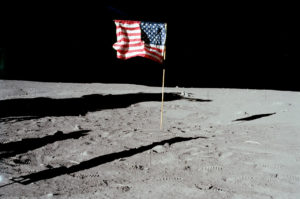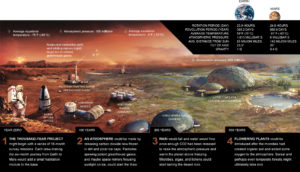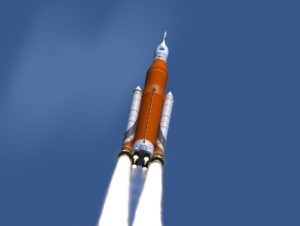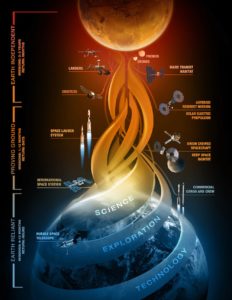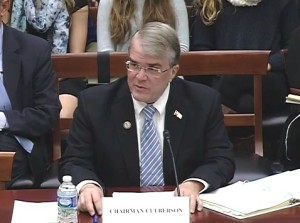A perennial talking point promoted by the space media is the belief that to save humanity, we must make a beeline to Mars. Supposedly, Mars is so “Earth-like” that it is the natural second home for humanity in space, a place to assure species survival in the event of some planetary catastrophe (such as a large meteorite impact). Because Mars could be “terraformed” to become even more Earth-like, we must focus our principal space efforts on undertaking human missions to Mars – ASAP (for the last 45 years).
For any sustainable human presence off-Earth to be successful, one must develop the means to arrive, survive and thrive. Most commentary on human Mars missions has focused entirely on the requirement to arrive because many of the technical problems associated with this must-accomplish first task remain unresolved. Presently, we don’t know how to build fault-tolerant, in-space serviceable systems necessary to support human life over the course of a multiple-year-long Mars mission. Protecting the crew from exposure to constant high-energy cosmic rays and sporadic solar particle events requires some means of shielding the vehicle – a daunting prospect in terms of mass and power. The means of a safe entry, descent and landing of a spacecraft (having mass of tens-of-tones) onto the martian surface must be developed, as these are currently completely unknown “details.” And if the trip is to be more than one-way, then provisioning, refueling and launching for the return home must be sorted out too. These issues must be resolved before a crewed mission to Mars can take place.
For the moment, I’ll ignore these non-trivial “arrival” issues and focus instead on the two remaining objectives – “survive and thrive.” Only rudimentary attention has been given to how humans will survive on the martian surface. Certainly, additional problems will come up that we cannot know now, but the ones we do understand are formidable enough. In contrast to the press it receives, the martian surface is a cold, alien, hostile environment – much more dangerous than free space or even, in some respects, the lunar surface. Although Mars does have an atmosphere, it is composed almost entirely of carbon dioxide and has less than one-hundredth the surface pressure of Earth. While this thin atmosphere protects the surface from the smallest micrometeoroids, it does not shield it from the highest energy cosmic rays or solar ultraviolet (UV) radiation. In addition, because Mars has no global magnetic field (and we cannot create one), galactic cosmic rays will always shower the surface, making underground dwellings a must – not in transparent domed cities on the surface, as portrayed in science fiction novels and films.
Like the Moon, the surface of Mars is covered with a fine dust, but unlike lunar soil, martian dust is chemically reactive – a toxic mix of perchlorates and peroxides that, combined with the high flux of solar UV and galactic cosmic rays to which the surface is exposed, makes for an almost completely sterilizing environment. The Viking landers flown 50 years ago could not find any organic matter (i.e., compounds made of carbon, nitrogen and hydrogen) in martian soil in any concentration at the parts-per-billion sensitivity level. The scenes in the recent film The Martian (held up by NASA as a model of scientific veracity and prediction) in which the astronaut fertilizes the martian soil and grows potatoes, is complete fantasy – we simply do not know how to alter the soil chemistry of Mars, fertilize it with organic matter, and then grow radiation-tolerant plants quickly enough to support a human community, let alone a single astronaut.
Water is thought to be present on Mars, so clearly supplying water would be no problem. Or would it? The upper surface of Mars is covered by rock and dust, but ground ice is present in many locations at depths between a few meters to several tens of meters. Subsurface ice could be reached by drilling or by setting off an explosive charge. Martian water is likely to be saline, which will necessitate its distillation for human consumption or agriculture, requiring more electrical power and adding complexity to surface systems.
Human communities need energy to do almost anything and energy production on Mars is a significant issue. Mars is farther from the Sun than the Earth is, so solar panels will generate only about half the energy (so at least twice the collection area will be needed). Because there are frequent dust storms on Mars, solar panels will require regular cleaning to assure peak power production; such a task is challenging for very large areas (thousands of square meters) of solar arrays. The gravity of Mars (0.38 of Earth) is more than twice that of the Moon (0.16 of Earth) and landing large masses of supplies and infrastructure on Mars is difficult. Perhaps solar arrays can be manufactured from local materials on the martian surface but as we do not know the surface chemical composition of different localities in detail, we do not know how difficult this might be. The obvious solution to these difficulties in energy production is to deploy a nuclear fission reactor; the problem is that no reactor of suitable size for use in space exists.
So aside from the inconvenient facts that we don’t know how to safely make the voyage, how to land on the planet, what the detailed chemistry of the soil is, or if we can access potable water, whether we can then grow food locally, or how to build habitats to shield us from the numbing cold and hostile surface environment, don’t know what protection is needed due to the toxic soil chemistry, or how to generate enough electrical power to build and operate an outpost or settlement – in spite of these annoying details that make this idea prohibitive, the creation of a Mars colony within a decade is marketed to the public as if the plans had already been drawn up.
But let us say for the sake of argument that we have addressed the first two tasks adequately – we have arrived and survived. How do we “thrive” on Mars? Of all the notions promulgated in the media about future Mars colonization, this last element is the one that is always ignored. With flashy artwork depicting futuristic cities, sleek flying cars, and lush green fields resplendent under transparent crystal domes (in startling contrast to the red-hued surrounding desert of the martian surface) it is simply assumed that a human colony on Mars will evolve into some kind of off-Earth utopia.
But how will these future Mars inhabitants make a living? And by that, I mean what product or service will they offer that anybody on Earth will want? If you think that the answer is autarky (complete economic isolation and self-sufficiency), then you are imagining an economy (and likely, a political state) in which North Korea is a free market, pluralistic paradise by comparison. People who migrate to Mars need more than food and shelter – they will need imports from Earth, material and intellectual products designed to enrich and refine life on the frontier. What will they have of value to trade or to sell for these imports?
We do not know if Mars contains anything that would have economic value on Earth. Mars has had a complex geological evolution, so we might expect the formation of ore deposits, possibly of substantial value. But even if this is true, we have no idea where these deposits occur or if they are accessible for mining and refining. Martian products must be of sufficient worth so as to merit their transportation back to terrestrial markets, which would require their launch out of the substantial Mars gravity well and back into the even greater gravity well of the Earth. Much is made of the possible economic value of “information,” but it is not clear that Mars is particularly rich in factual data marketable to those back on Earth, although a martian pioneer might have desperate need of it – which would make them their own “customers” and exacerbate the economic disparity of the colony to an even greater degree.
Colonies are not founded in some far-off land because they “look cool” or because some plutocrat wants to retire there. They are established primarily for two reasons: power projection and/or wealth creation. Small, barren islands or isolated localities might not offer much in the way of wealth, but their strategic value might be immense (e.g., Gibraltar). On the other hand, the New World was often more trouble than profit to most European states in the immediate aftermath of Columbus’ discovery. But once the gold and silver started flowing, colonists soon followed and pursued profitable and sustainable endeavors once they arrived and survived. The idea of a sustainable space settlement requires the creation of some kind of market – either economic or strategic – for whatever they find or produce there. Such might be achievable in free space (e.g., the generation and sale of space solar power) or on the Moon (e.g., the production of water to fuel a permanent space transportation system). Mars is too far away and relatively inaccessible to serve strategic ends, and an economic driver has not been identified – other than reality TV to observe any surviving arrivals as if they were zoo creatures (“Mars Survivor!” Who gets voted out of the airlock this week?).
Of all the “thrive” concepts yet advanced for space settlements, the idea of “terraforming” Mars (i.e., making the martian surface conditions like those of the Earth) is the most unbelievable. In essence, this is a proposal to manufacture an Earth-like environment on a planetary scale – a technical task we can barely manage within the confines of a single, small spacecraft. Yet some blithely speak of altering a planet’s atmosphere, hydrosphere and crust to make a “second Eden” where humans can roam free and settle widely. The unknowns involved in such an undertaking are not simply monumental, they are literally inestimable – to borrow a phrase, “we don’t know what we don’t know.” We are still uncertain about all of the factors that control and influence Earth’s climate and habitability, let alone know enough to manipulate the evolution of an alien planet toward some desired end. Spurring imaginations, this fantasy future is always depicted in beautiful artwork, where colonists inhabiting the ancient, parched red planet, see a world gradually being overtaken by shades of blue and green. We just need to go! This is science fiction indeed.
This new delusion – Mars as the New World – illustrates better than almost anything else the anemic state of the American space program. This debilitating condition allows for patent nonsense to be seriously peddled to a credulous, compliant and negligent media who will eagerly print virtually any headline or story. The space community needs to rethink how they communicate the truth about our space future to the public (and to future engineers and scientists) if they seriously plan to go anywhere in the future.
